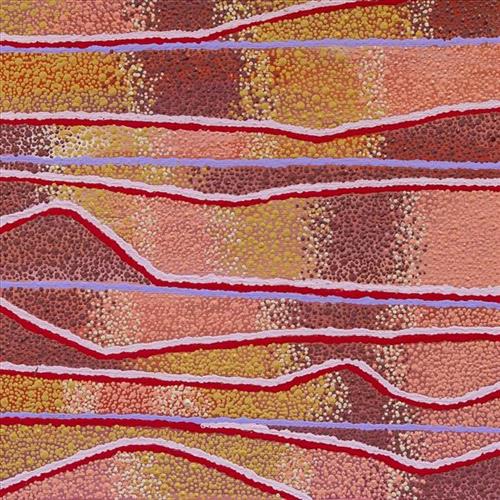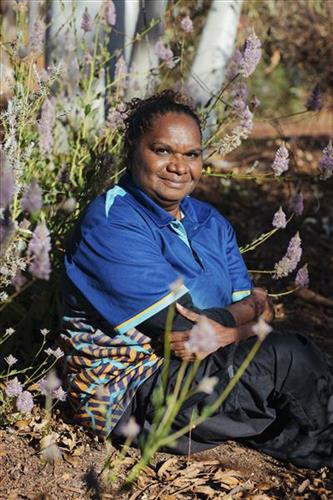111582397517
Kulyakartu
“My great grandmothers Tjarli-Tjarli and Nganyaltunta (Tunta) are from this country, Kulyakartu. As I learnt through going out with KJ Rangers that this area is fertile country. Many wild flowers and bush tucker back in the day. Fewer wildflowers than before my grandmother Nola told me, because the land is getting more warmer. Kulyakartu is my mother’s maternal side, my mother’s mother country. It is important to paint country to tell our children where we come from and our obligation to look after it.”
– Nuriah Jadai
The Martu term for family, walytja, encapsulates a broader idea of relatedness that permeates every aspect of life. The Martu four-section kinship system determines a person as belonging to either the Purungu, Milangka, Panaka or Karrimarra skin group, and was created by the Jukurrpa (Dreaming) ancestors.
Walytja groups had rights to their ngurra (home Country, camp) as inherited over generations. Also passed down over generations was the intimate knowledge of the physical and cultural properties of one’s Country, and the responsibility to care for and nurture one’s ngurra. The passing of rights and responsibilities through walytja in relation to specific lands continues today.
This painting depicts Kulyakartu, part of Nuriah’s ngurra (home Country, camp). Kulyakartu is located in the far north of the Martu homelands, near the Percival Lakes region of Western Australia’s Great Sandy Desert. Kulyakartu is mostly grass Country where there is very good hunting. In particular parnajarrpa (goanna), wild cats, and lunki (witchetty grub) are found in abundance here. There is no permanent water source in Kulyakartu, so Nuriah’s family would walk here annually following the wantajarra (wet season). During the yalijarra (hot, dry season) they would head south again to more permanent water.




